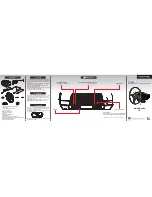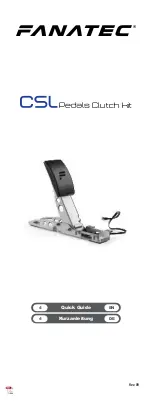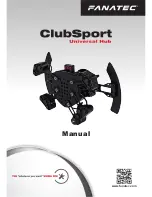
Maintenance
Instruction Manual
March 2017
LIQ-MAN-396R-396RVP
48
Maintenance
6.6
Sensor Tube Replacement When Used With A
Sensor Head Junction Box
Replace ment of the retraction versions sensor tube assembly involves the removal and installation
of two sets of male connectors: One at the process end of the sensor, and the other at the junction
box end (See Figures 6-1, 6-2). Refer to Section 6.2 for proper removal of the sensor from process.
1.
Remove sensor from process before proceeding. The junction box with attached male
connector must be recovered from the old sensor for reuse. Unscrew the junction box cover
and set aside. Disconnect electrical connections from printed circuit board inside junction
box. Disconnect BNC connector to preamp. Unscrew hex nut (D) from male connector
body (C). Separate junction box from used sensor. Set aside.
2.
Pry off split ferrule from sensor and set aside for reuse. Remove hex nut (D) and set aside
for reuse. Check that the internal O-ring is in place in the male connector body (C) attached
to the junction box.
3.
Remove hex nut (B) from male connector body (A) at process end of sensor and set aside.
Slide the Teflon ferrule and the male connector off sensor in the direction of junction box
and set.
4.
Discard used O-ring from male connector body (A). Coat new O-ring with a thin film of the
O-ring lubricant provided. Position it in the machined Oring groove in place of the
discarded O-ring.
5.
Cover the 1" MNPT pipe threads of the male connector body (A) with Teflon tape (not
provided) to protect them from galling during reinstallation.
6.
Pass the wires from the new sensor through the process end male connector (A). Make
sure that the beveled edge of the ferrule faces the process end of the sensor. Snug the hex
nut (B) to keep it in place. Do not tighten down fully on the hex nut at this time.
7.
Pass the wires from the new sensor through the hex nut (D), the split ferrule (from the old
sensor), male connector body (C), O-ring, and through the junction box from the “neck”
opening and out to the printed circuit board in the junction box. Butt the ferrule’s beveled
edge and the sensor tube against the junction male connector (C). Screw the hex nut (D)
by hand until the tube is “locked” into the male connector body. Make sure that the male
connector body (C) is sufficiently tightened. The sensor will “click” into place by pulling
the sensor tube away from the junction box, but will not move from side to side or pull
clear of the male connector. If the sensor tube is correctly attached to the junction box,
wrench tighten hex nut (D) on male connector body (C) (see Figure 6-1). Do not put the
sensor tube in a vise or use a pipe wrench to tighten the hardware as these will damage
the sensor. If sensor tube is not correctly attached to the junction box, loosen hex nut (D)
and repeat.
If stainless steel ferrule was used, male connector body (A) will have to be discarded with the sensor tube.
NOTICE
Make sure lubricant does not contact any part of the sensor tip particularly the glass bulb.
CAUTION
Summary of Contents for 396R
Page 1: ...Rosemount 396R 396RVP pH ORP Sensors Instruction Manual LIQ MAN 396R 396RVP Rev K March 2017 ...
Page 2: ...hasgkas ...
Page 6: ...Table of Contents Instruction Manual March 2017 LIQ MAN 396R 396RVP ii Table of Contents ...
Page 22: ...16 Installation Installation Instruction Manual March 2017 LIQ MAN 396R 396RVP ...











































